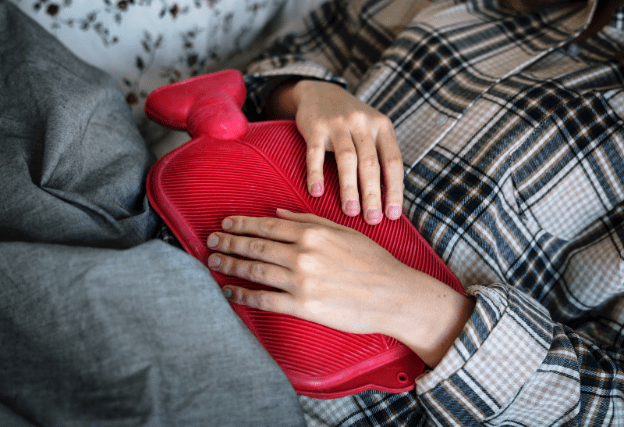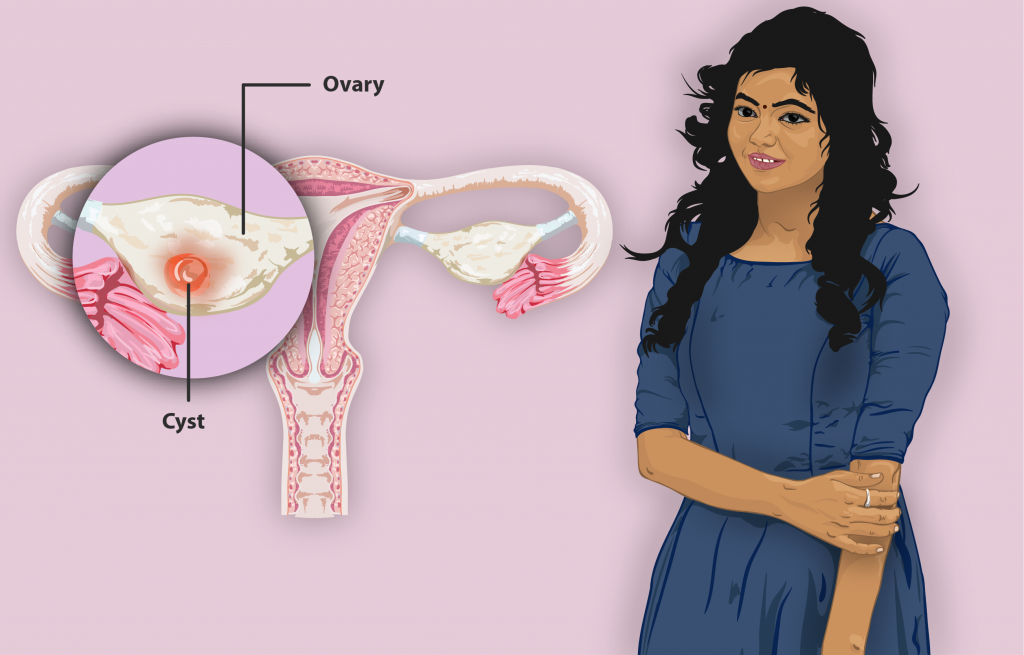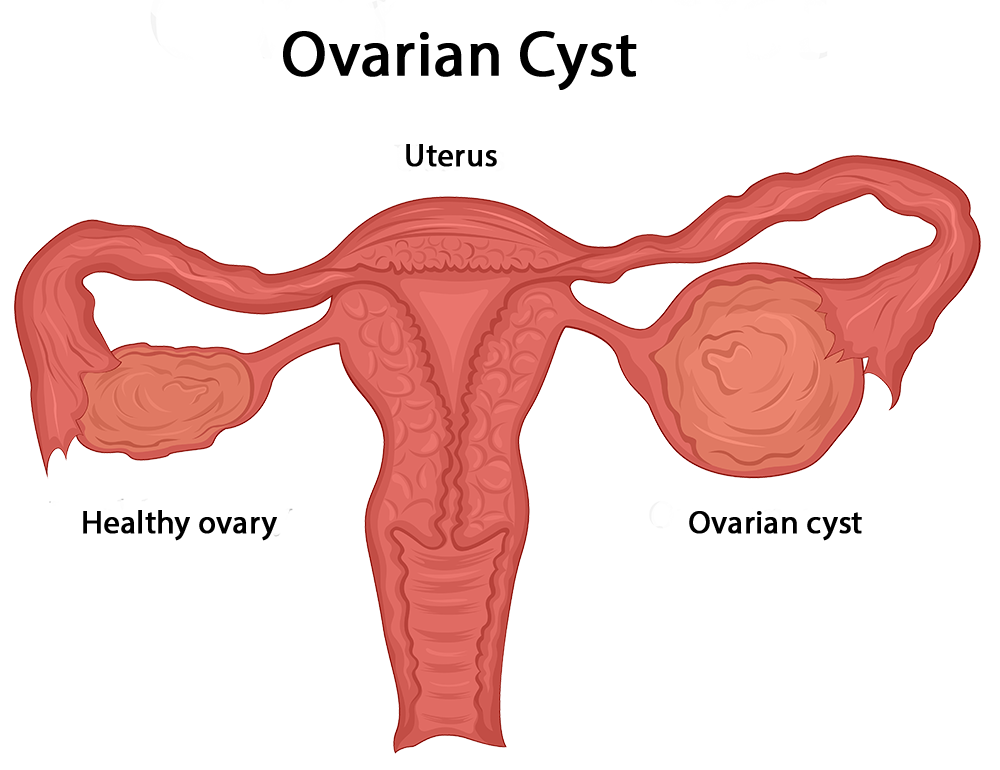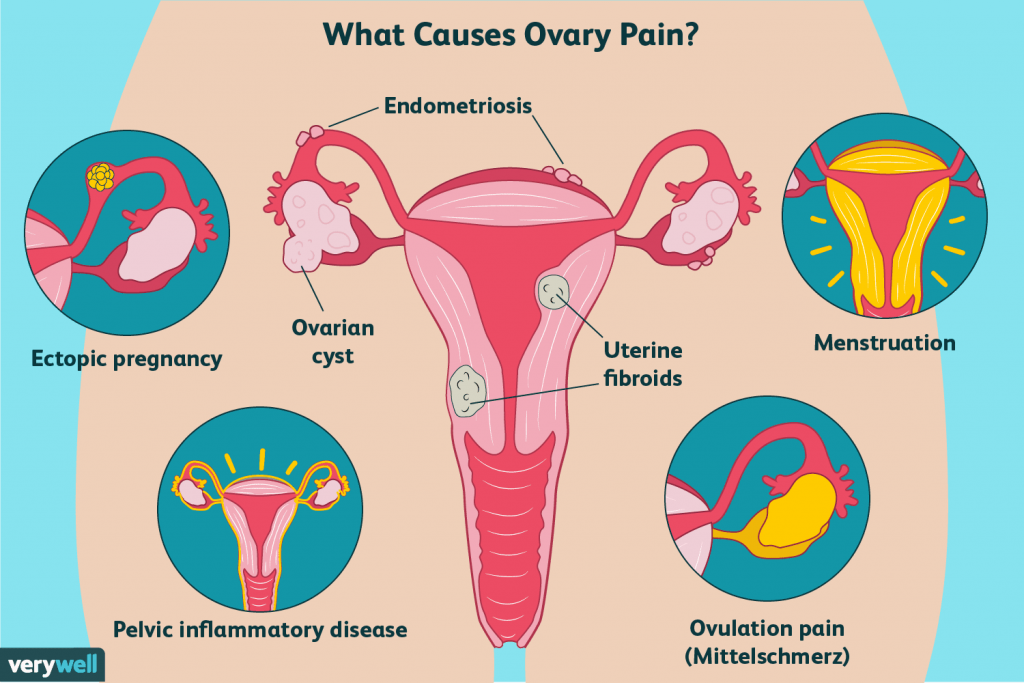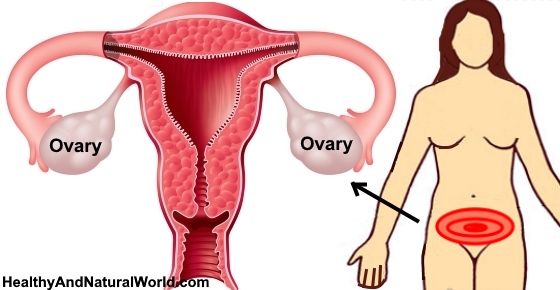An ovarian cyst is any collection of fluid, surrounded by a very thin wall, within an ovary. Any ovarian follicle that is larger than about two centimeters is termed an ovarian cyst. An ovarian cyst can be as small as a pea, or larger than an orange.
Most ovarian cysts are functional in nature, and harmless (benign).Ovarian cysts affect women of all ages. They occur most often, however, during a woman’s childbearing years.Some ovarian cysts cause problems, such as bleeding and pain.
1. Functional cysts
Functional cysts, or simple cysts, are part of the normal process of menstruation. They have nothing to do with disease, and can be treated. There are 3 types, Graafian, Luteal, and Hemorrhagic. These types of cysts occur during ovulation. If the egg is not released, the ovary can fill up with fluid. Usually these types of cysts will go away after a few period cycles.
(a)Graafian follicle cyst
A simple cyst, which is the most common type of ovarian cyst, is the graafian follicle cyst, or follicular cyst.
(b)Corpus luteum cyst
Another is a corpus luteum cyst (which may rupture about the time of menstruation, and take up to three months to disappear entirely).
(c)Hemorrhagic cyst
A third type of functional cyst, which is common, is a Hemorrhagic cyst, which is also called a blood cyst, hematocele, and hematocyst. It occurs when a very small blood vessel in the wall of the cyst breaks, and the blood enters the cyst.
2. Dermoid cyst
A bizarre tumor, usually benign, in the ovary that typically contains a diversity of tissues including hair, teeth, bone, thyroid, etc.A dermoid cyst develops from a totipotential germ cell (a primary oocyte) that is retained within the egg sac (ovary). Being totipotential, that cell can give rise to all orders of cells necessary to form mature tissues and often recognizable structures such as hair, bone and sebaceous (oily) material, neural tissue and teeth.
3. Endometrioid cyst
An endometrioma, endometrioid cyst, endometrial cyst, or chocolate cyst is caused by endometriosis, and formed when a tiny patch of endometrial tissue (the mucous membrane that makes up the inner layer of the uterine wall) bleeds, sloughs off, becomes transplanted, and grows and enlarges inside the ovaries.
4. Pathological cysts
Other cysts are pathological, such as those found in polycystic ovary syndrome, or those associated with tumors.
Signs and symptoms
Some or all of the following symptoms may be present, though it is possible not to experience any symptoms:
- Dull aching, or severe, sudden, and sharp pain or discomfort in the lower abdomen (one or both sides), pelvis, vagina, lower back, or thighs; pain may be constant or intermittent — this is the most common symptom
- Fullness, heaviness, pressure, swelling, or bloating in the abdomen
- Breast tenderness
- Pain during or shortly after beginning or end of menstrual period.
- Irregular periods, or abnormal uterine bleeding or spotting
- Change in frequency or ease of urination (such as inability to fully empty the bladder), or difficulty with bowel movements due to pressure on adjacent pelvic anatomy
- Weight gain
- Nausea or vomiting
- Fatigue
- Infertility
- Increased level of hair growth
- Increased facial hair or body hair
- Headaches
- Strange pains in ribs, which feel muscular
- Bloating
- Strange nodules that feel like bruises under the layer of skin
Diagnosis
Ovarian cysts are usually diagnosed by either ultrasound or CT scan.
Treatment
About 95% of ovarian cysts are benign, meaning they are not cancerous.Treatment for cysts depends on the size of the cyst and symptoms. For small, asymptomatic cysts, the wait and see approach with regular check-ups will most likely be recommended.Pain caused by ovarian cysts may be treated with Homeopathic medicines
Homeopathic Treatment
Homeopathic remedies are prescribed by symptoms rather than conditions, as each case of a particular illness can manifest differently in different people. Homeopathic medicine offers more options for treating ovarian cysts. Depending on the symptoms accompanying the cysts, there are different treatments. Homeopathic remedies are normally made from plant, mineral and animal extracts. With the help of Homeopathic treatment we can eliminate cysts, regulate ovulation and relieve painful menstruation.
